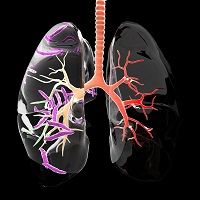Publication
Article
Internal Medicine World Report
12-Dose Drug Regiment Now an Option for TB in Children, Adolescents
Author(s):
Nearly a million children annually develop tuberculosis (TB), with caseloads highly concentrated in areas affected by poverty and social disruption.

Nearly a million children annually develop tuberculosis (TB), with caseloads highly concentrated in areas affected by poverty and social disruption.
All countries are affected because of increased international travel, population migration, and refugee resettlement. Despite improved guidance and policies on TB, disease management and implementation of TB guidelines remains poor, especially with respect to preventive therapy.
Preventive therapy protects vulnerable individuals, including young children, from active disease following exposure or infection and reduces the reservoir of latent infection from which future reactivation of disease may develop. However, multiple barriers limit uptake of preventive therapy, including the long treatment duration and poor adherence to therapy.
Sterling et al’s 2011 report of PREVENT study data, showing a supervised regimen of 12 once-weekly doses of combined rifapentine and isoniazid was safe and effective in adults, was the first major feasibility breakthrough, according to Ben J. Marais, PhD, of the Children’s Hospital at Westmead in Sydney, Australia. Marais reviewed a new study by Villarino et al., in the March 2015 issue of JAMA Pediatrics, which reported data from a randomized trial extending the earlier findings to children and adolescents.
The trial analyzed data from 905 children aged 2 to 17 years of age from 29 study sites in the US, Canada, Brazil, Hong Kong, and Spain. No study participant experienced hepatotoxic effects or any grade 4 adverse event. Three children in the isoniazid monotherapy arm developed TB, and no disease was recorded in those given combination therapy with isoniazid and rifapentine. Treatment completion was slightly better with combination therapy.
Marais noted confirmation that isoniazid and rifapentine combination therapy is safe and of equivalent efficacy to isoniazid monotherapy in children aged 2 to 17 years is an important and long-awaited finding. He expressed his regret, however, in that children younger than 2 years of age — who would benefit most from preventive therapy – were excluded from the trial. The paucity of young (age <5 years) children and/or HIV-infected children limited the generalizability of the study results, Marais noted. “It is important that these studies are performed in all relevant age groups.”
Given the strength of the evidence and the urgent need to implement effective TB prevention strategies in high-burden settings, experts hope that isoniazid and rifapentine combination therapy soon becomes the standard of care for HIV-uninfected individuals in most settings.
Because rifapentine is not widely available outside the United States, however, active campaigning by TB control programs and societies will be needed, because market forces are likely to be inadequate. Child-friendly formulations will also be needed, along with more safety and pharmacokinetic data in children younger than 2 years of age.






